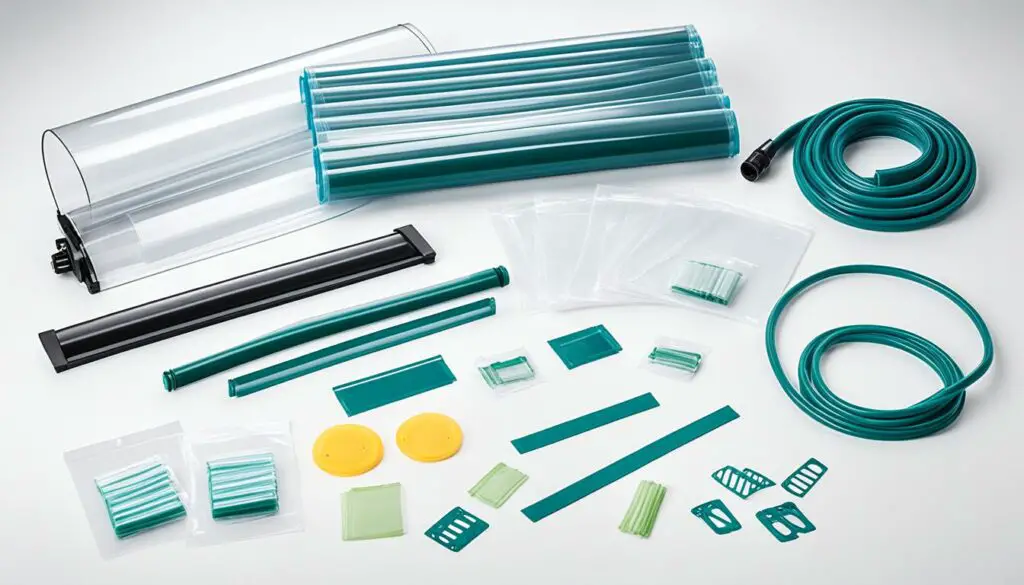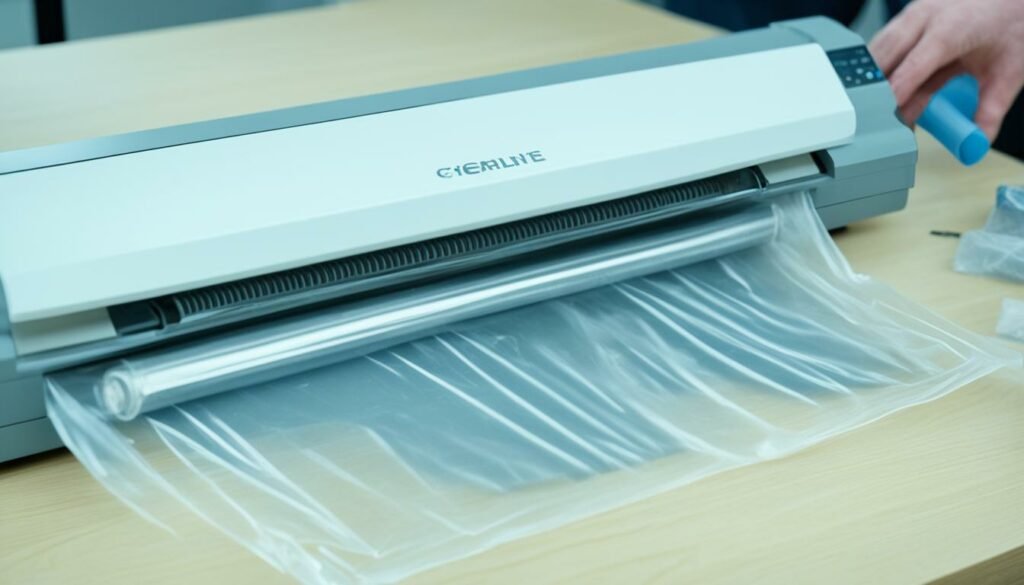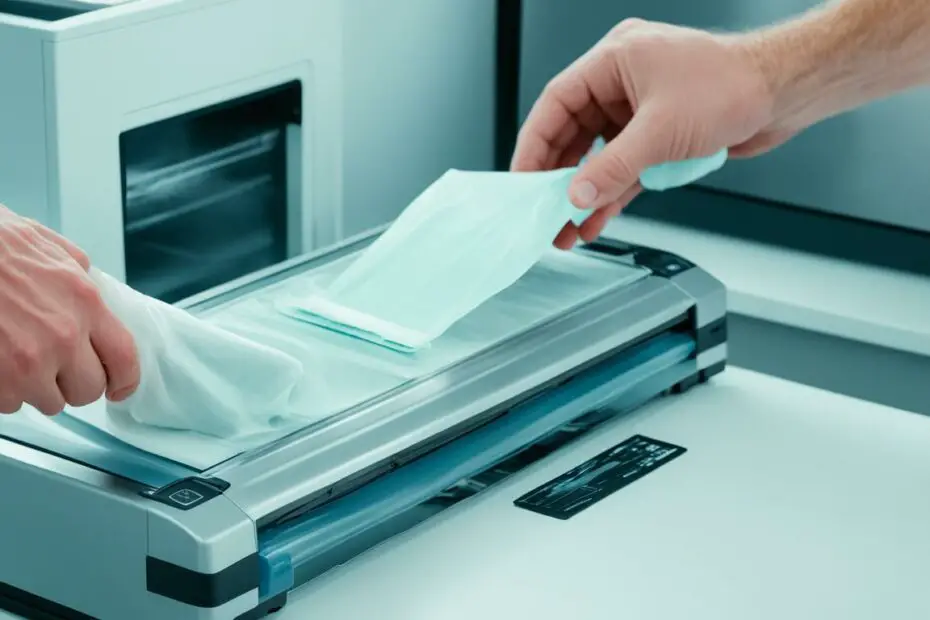In the heart of every kitchen, a reliable vacuum sealer stands as a guardian of food freshness and preservation. Just like any other appliance, proper maintenance and care are crucial to ensure its longevity and optimal performance. Imagine the frustration of a vacuum sealer repair or the disappointment of spoiled food due to a malfunctioning unit. That’s why we’ve prepared this comprehensive guide to help you navigate the world of vacuum sealer maintenance with ease.
Whether you’re a seasoned chef or a busy homemaker, understanding the vacuum sealer troubleshooting techniques, vacuum sealer cleaning methods, and vacuum sealer storage best practices will not only extend the life of your investment but also guarantee the safety and quality of your vacuum-sealed goods. From addressing air leaks to replacing gaskets, we’ve got you covered with vacuum sealer maintenance tips tailored to your needs.
The Importance of Proper Vacuum Sealer Maintenance
Maintaining your vacuum sealer is crucial for extending its lifespan and ensuring optimal performance. As a valuable investment for households and businesses, proper maintenance and care for vacuum sealers can help you get the most out of your appliance.
Extending the Life of Your Investment
Regular maintenance and cleaning of your vacuum sealer can significantly prolong its operational life. By following the manufacturer’s maintenance tips and guidelines in the vacuum sealer manual, you can prevent premature wear and tear, reducing the likelihood of costly repairs or replacements.
Ensuring Food Safety and Quality
Vacuum sealers play a crucial role in preserving the freshness and quality of your food. However, a poorly maintained unit can potentially compromise food safety by harboring bacteria and contaminants. Thorough cleaning and adhering to recommended vacuum sealer maintenance practices help prevent cross-contamination, safeguarding the integrity of your vacuum-sealed items.
By incorporating routine maintenance into your vacuum sealing routine, you not only extend the lifespan of your investment but also ensure the highest standards of food safety and quality for your household or business.
Cleaning and Sanitizing Your Vacuum Sealer
Maintaining the cleanliness and hygiene of your vacuum sealer is crucial for optimal performance and food safety. Regular cleaning and sanitizing ensure that your appliance remains free from residue, bacteria, and other contaminants that could compromise the vacuum sealing process or spoil your food.
Disassembling and Cleaning the Components
Before beginning the cleaning process, consult your vacuum sealer manual for specific disassembly instructions. Typically, you’ll need to remove the removable components, such as the drip tray, sealing gaskets, and vacuum chamber. These parts should be carefully cleaned with warm, soapy water and a soft cloth or sponge.
Approved Cleaning Solutions and Techniques
For effective vacuum sealer cleaning, use mild, food-safe cleaning solutions or diluted vinegar. Avoid harsh chemicals or abrasive materials that could damage the appliance’s surfaces or leave unwanted residues. Follow the maintenance tips outlined in your vacuum sealer manual for recommended cleaning products and methods.
To clean the vacuum chamber and other hard-to-reach areas, consider using a soft-bristled brush or a damp cloth. Pay special attention to the sealing gaskets, as these components are crucial for achieving an airtight seal during the vacuum sealing process.
Drying and Reassembling the Unit
After thorough cleaning, ensure that all components are completely dry before reassembling the vacuum sealer. Residual moisture can lead to mold growth, potential short-circuits, or other issues. Follow the vacuum sealer manual instructions carefully when reassembling the appliance to ensure proper alignment and functionality.
By incorporating regular cleaning and sanitizing practices into your maintenance and care for vacuum sealers routine, you’ll extend the lifespan of your appliance and safeguard the quality and safety of your vacuum-sealed foods.
Troubleshooting Common Vacuum Sealer Issues
Even with proper maintenance and care for vacuum sealers, issues can occasionally arise. Let’s explore strategies for addressing air leaks, seal failures, overheating, and power problems – equipping you with the knowledge to troubleshoot and resolve common challenges.
Addressing Air Leaks and Seal Failures
Air leaks and seal failures can compromise the vacuum sealing process, reducing the shelf life and quality of your food items. To tackle these issues, we recommend the following steps:
- Inspect the sealing gaskets and strips for wear, cracks, or debris. Replace them if necessary.
- Ensure the vacuum sealer is properly aligned and the lid closes tightly.
- Check for any obstructions or wrinkles in the bag that could prevent an airtight seal.
- Try using new, high-quality vacuum sealer bags compatible with your appliance.
Resolving Overheating and Power Problems
Overheating and power issues can not only hinder the vacuum sealer’s performance but also pose potential safety hazards. Here are some troubleshooting steps to consider:
- Clean the air vents and fan to ensure proper airflow and prevent overheating.
- Inspect the power cord for any damage and ensure it’s securely connected.
- Consult the manufacturer’s manual to check if the vacuum sealer is drawing the correct voltage.
- Avoid running the appliance for extended periods without breaks to prevent overheating.
By following these troubleshooting steps, you can resolve common issues and extend the lifespan of your vacuum sealer, ensuring optimal performance and maintaining the quality of your vacuum-sealed items.
Maintaining and Replacing Vacuum Sealer Accessories
Proper maintenance and care for vacuum sealers extend beyond just the appliance itself. The accessories, such as vacuum sealer bags and gaskets, play a crucial role in ensuring optimal performance and longevity. By taking the time to care for these components and replacing them when necessary, we can maximize the efficiency of our vacuum sealing process and preserve the freshness of our food.
Caring for Vacuum Sealer Bags
Vacuum sealer bags are an essential accessory that directly impact the quality of the vacuum seal. To ensure their longevity and effectiveness, we recommend the following tips:
- Store unused bags in a cool, dry place, away from direct sunlight and heat sources.
- Avoid folding or creasing the bags, as this can compromise the seal and lead to air leakage.
- Inspect bags before use and discard any that appear damaged or worn.
- Follow the manufacturer’s instructions for proper cleaning and maintenance of reusable vacuum sealer bags.
Replacing Gaskets and Sealing Strips
Over time, the gaskets and sealing strips within your vacuum sealer can wear down, leading to air leaks and seal failures. Regularly inspecting and replacing these components is essential for maintaining an airtight seal and prolonging the lifespan of your vacuum sealer.

- Refer to your vacuum sealer’s manual for instructions on locating and removing the existing gaskets and sealing strips.
- Obtain replacement parts that are compatible with your specific vacuum sealer model.
- Clean the areas where the new gaskets and sealing strips will be installed, ensuring a secure fit.
- Carefully install the new components, following the manufacturer’s guidelines.
By taking care of your vacuum sealer bags, gaskets, and sealing strips, you’ll ensure that your vacuum sealer operates at peak performance, preserving the quality and freshness of your food for longer periods.
Maintenance and Care for Vacuum Sealers
As vacuum sealers become an essential appliance in many households, proper maintenance and care are crucial to ensure their longevity and optimal performance. By following the manufacturer’s instructions and adopting regular cleaning and inspection schedules, we can maximize the lifespan of our vacuum sealers and preserve the quality of our vacuum-sealed foods.
Following Manufacturer’s Instructions
Every vacuum sealer comes with a comprehensive manual that outlines specific guidelines for maintenance and care for vacuum sealers. These manuals are tailored to the unique features and components of each model, providing valuable insights and recommendations from the experts who designed and manufactured the appliance. Adhering to these instructions is vital for maintaining the warranty and ensuring the safe and efficient operation of your vacuum sealer.
Regular Cleaning and Inspection Schedules
Establishing a consistent cleaning and inspection routine is essential for keeping your vacuum sealer in top condition. Regular cleaning helps to remove residual food particles, moisture, and other contaminants that can accumulate over time, potentially affecting the sealing process and compromising food safety. Additionally, periodic inspections allow us to identify any potential issues, such as worn gaskets or sealing strips, before they escalate into more significant problems.
To ensure optimal performance, we recommend consulting your vacuum sealer manual for specific cleaning instructions and recommended schedules. This may involve disassembling certain components, using approved cleaning solutions, and drying the unit thoroughly before reassembling it. By incorporating these practices into our routine, we can prevent unnecessary wear and tear, extend the lifespan of our vacuum sealers, and maintain a consistently high level of food preservation.
Proper Storage and Transportation of Vacuum Sealers
Ensuring the proper storage and transportation of your vacuum sealer is crucial for maintaining its longevity and optimal performance. Maintenance and Care for Vacuum Sealers extends beyond regular cleaning and repairs; it also involves protecting the unit from potential damage during storage and relocation.
Protecting the Unit from Dust and Moisture
When not in use, it is essential to store your vacuum sealer in a clean, dry environment, away from direct sunlight and moisture. Dust and moisture can seep into the internal components, leading to corrosion, short circuits, and potential malfunctions. We recommend covering the unit with a breathable cloth or storing it in its original packaging to shield it from dust accumulation.
Additionally, avoid storing your vacuum sealer in damp or humid areas, such as basements or laundry rooms, as the excess moisture can compromise the device’s performance and lifespan. Proper vacuum sealer storage in a climate-controlled environment will help maintain its integrity and prevent premature wear and tear.
Safe Handling and Moving Techniques
Vacuum sealers are delicate appliances, and rough handling or accidental drops can cause internal damage or dents that may affect their functionality. When moving or transporting your vacuum sealer, exercise caution and handle it with care. We recommend securing it in its original packaging or a sturdy container to prevent shifting during transit.
If you need to relocate your vacuum sealer, lift it carefully, avoiding any twisting or jerking motions that could strain the internal components. For larger or heavier models, consider seeking assistance to ensure safe handling and prevent potential injuries or damage to the unit.
| Proper Storage | Safe Transportation |
|---|---|
|
|
By following these guidelines for proper storage and transportation, you can extend the lifespan of your vacuum sealer and ensure it remains in optimal condition for efficient vacuum sealing tasks. Maintenance and Care for Vacuum Sealers encompasses all aspects of ownership, from routine cleaning to safe handling and storage practices.
Vacuum Sealer Maintenance Kits and Supplies
Investing in a quality vacuum sealer maintenance kit and essential supplies is crucial for ensuring the longevity and optimal performance of your vacuum sealer. These kits typically include replacement parts, cleaning solutions, and tools necessary for routine maintenance and care for vacuum sealers.
One of the key advantages of purchasing a maintenance kit is the convenience of having all the necessary vacuum sealer accessories and vacuum sealer parts replacement components in one package. This eliminates the hassle of sourcing individual items separately and ensures compatibility with your specific vacuum sealer model.
- Replacement gaskets and sealing strips
- Cleaning brushes and cloths
- Approved cleaning solutions or lubricants
- Instructional manual or guide
When selecting a maintenance kit, it’s essential to consider the specific model of your vacuum sealer and its usage requirements. Some kits may cater to residential use, while others are designed for commercial or heavy-duty applications.
| Kit Type | Suitable For | Typical Inclusions |
|---|---|---|
| Basic Kit | Occasional home use | Gaskets, cleaning solutions, cloth |
| Advanced Kit | Frequent home or light commercial use | Gaskets, sealing strips, cleaning tools, lubricants |
| Professional Kit | Commercial and heavy-duty use | Gaskets, sealing strips, cleaning solutions, specialized tools |
In addition to maintenance kits, it’s advisable to keep a stock of spare vacuum sealer bags and other essential accessories on hand. This ensures uninterrupted use and allows you to maintain a consistent supply of high-quality vacuum sealing materials.
DIY Vacuum Sealer Repairs and Maintenance
With proper care and maintenance, your vacuum sealer can serve you reliably for years. While some repairs may require professional assistance, many common issues can be resolved through DIY methods, saving you time and money. In this section, we’ll explore some straightforward DIY repairs and maintenance tasks you can undertake to keep your vacuum sealer in top condition.
Common Replaceable Parts and Tools
One of the most common DIY repairs involves replacing worn or damaged components. Here are some frequently replaced parts and the tools you’ll need:
- Gaskets and sealing strips: These components create an airtight seal, ensuring efficient vacuum sealing. Over time, they can become brittle or cracked, requiring replacement. A set of pliers or a gasket removal tool can help with this task.
- Vacuum pump: The vacuum pump is the heart of your sealer, responsible for creating the vacuum. If it fails, it can be replaced with the right model for your unit. You may need a screwdriver set and pliers for this repair.
- Heating element: The heating element seals the vacuum bags. If it’s not working correctly, you may need to replace it. Ensure you have the proper replacement part and tools like a soldering iron, wire cutters, and heat-resistant gloves.

Safety Precautions for DIY Repairs
While DIY repairs can save you money, they also come with risks if not done properly. Always prioritize your safety by following these precautions:
- Unplug the vacuum sealer before attempting any repairs or maintenance. This will prevent electrical shocks or accidents.
- Read the manufacturer’s instructions carefully and follow them to the letter. Improper handling can damage the unit or cause injuries.
- Use the correct tools for the job. Attempting repairs with makeshift or improper tools can be dangerous and may damage the sealer.
- Exercise caution when working with electrical components or heating elements. Wear protective gear like insulated gloves and safety glasses.
By taking the necessary precautions and following the manufacturer’s guidelines, you can safely perform DIY vacuum sealer repairs and maintenance, prolonging the lifespan of your valuable appliance while saving on repair costs.
Professional Vacuum Sealer Repair Services
Despite our best efforts to maintain and care for our vacuum sealers, these essential appliances may occasionally require professional repair services. When faced with complex issues or malfunctions beyond our DIY capabilities, seeking the expertise of authorized service centers becomes crucial.
Locating Authorized Service Centers
The first step in obtaining professional vacuum sealer repair is locating an authorized service center near you. Many manufacturers provide lists of approved service providers on their websites or within the product manuals. These authorized centers employ trained technicians who specialize in repairing and servicing the specific brand and models of vacuum sealers.
Evaluating Repair Costs vs. Replacement
Once you have identified a reputable service center, it’s essential to evaluate the repair costs against the potential of replacing the vacuum sealer entirely. Factors such as the appliance’s age, the extent of the damage, and the availability of replacement parts all play a role in this decision-making process.
In some cases, the cost of repair may exceed the price of a new vacuum sealer, especially if the unit is older or the required parts are no longer readily available. However, for newer models or more straightforward repairs, professional servicing can be a cost-effective solution to extend the lifespan of your investment.
Ultimately, consulting with the authorized service center and obtaining detailed repair estimates will help you make an informed decision. By weighing the costs, considering the vacuum sealer’s age and condition, and factoring in the convenience of a replacement, you can determine the most practical and economical course of action.
Conclusion
In the world of vacuum sealing, maintenance and care for vacuum sealers are crucial for optimal performance and longevity. Throughout this comprehensive guide, we have explored various aspects of keeping your vacuum sealer in top-notch condition. From cleaning and sanitizing to troubleshooting common issues and replacing essential accessories, maintenance and care for vacuum sealers have been thoroughly covered.
By implementing the maintenance and care strategies outlined, you can extend the lifespan of your valuable investment while ensuring food safety and quality. Regular cleaning, adhering to manufacturer’s instructions, and promptly addressing any potential problems will maximize the efficiency and reliability of your vacuum sealer.
Maintenance and care for vacuum sealers not only safeguard your appliance but also contribute to an enjoyable and hassle-free vacuum sealing experience. We encourage you to embrace the tips and techniques shared, empowering you to get the most out of your vacuum sealer for years to come. Prioritize maintenance and care, and unlock the full potential of this invaluable kitchen tool.
